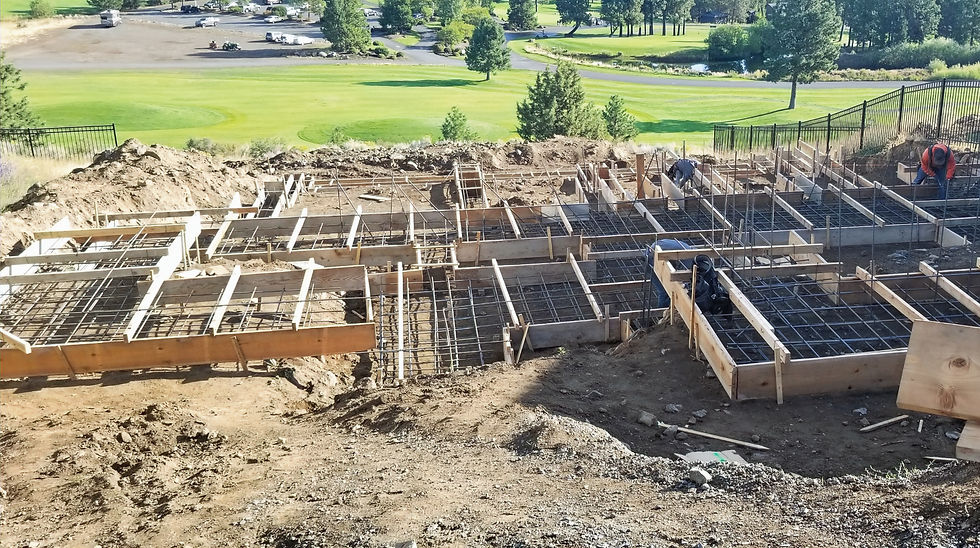Key Considerations When Evaluating Land for Your Future Home Construction
- RSH

- Aug 16
- 4 min read
Updated: Sep 5
Finding the right piece of land is the foundation of building your dream home. This step can greatly influence both the cost and enjoyment of your future residence. Understanding key factors to analyze when considering a lot will empower you to make a wise investment. Here are the essential elements to evaluate before making your purchase.
Utilities Availability
One of your first priorities should be to check the availability of utilities. Access to water, electricity, gas, and sewage services is vital for your future home. If you have to install these services yourself, the expenses can be hefty and unexpected.
Ask yourself:
Are water and electricity lines already on-site, or will you need to extend them from a distance?
What are the connection fees, typically ranging from a few hundred to several thousand dollars, based on location and utility company?
Are there local regulations regarding utility installation that I should be aware of?
Getting a clear picture of the utility situation can help you prepare a more accurate budget and avoid any surprises later on.
Access to the Site
The accessibility of your chosen lot is another significant factor in the building process. A property that is hard to reach can complicate construction logistics and incur additional costs. Consider the following aspects:
Are the roads leading to the property well-maintained? Poor road conditions can contribute to higher construction delivery costs.
How close is the property to major highways, which can impact your daily commute?
Are there any easements or rights of way that might restrict access to the lot?
If the lot is remote or requires significant road improvements, your overall construction budget could increase substantially.
Elevation Changes
The topography of your lot can affect both your construction plans and budget. Properties with steep slopes might need extensive grading, which can add up quickly. Evaluate the following:
What is the lot's overall slope?
Are there significant elevation changes that may complicate construction?
Will you need to import fill dirt to create a level building site?
Purchasing a lot with a lower initial price might seem appealing, but high grading costs could turn it into an unwise investment. For instance, a steep lot could cost you 10% to 30% more to develop than a flat parcel.

Flood Zone Considerations
Knowing whether your potential lot lies within a flood zone is critical. Building in such areas can lead to complications and costs that are avoidable. Flood-prone locations can lead to:
Increased insurance premiums, which can be 20% to 50% higher than standard rates.
Restrictions on building height and style, which could limit your design options.
The necessity for additional drainage solutions that could cost several thousand dollars.
Familiarize yourself with local flood maps and consult officials to understand the flood risk of the property.
Terrain Restrictions
Terrain can dictate where you are allowed to build, presenting limits that must be taken into account. Certain areas may be unsuitable for construction due to wetlands, rocky outcroppings, or other obstacles. Investigate:
Are there sections of the lot marked as unsuitable for building?
Will significant modification of the terrain be necessary to develop your home?
A clear understanding of terrain restrictions can prevent costly modifications and save time during the construction phase.
Purpose of the Property
Clarifying how you intend to use the property is crucial before making a purchase. Are you envisioning a single-family residence, or do you need room for other structures like a workshop or barn? Consider the following:
What amount of land do you need for both your home and additional structures?
Are there zoning laws that could limit your construction plans?
Does the size of the lot fit your vision for future development?
A well-defined purpose helps ensure you select a lot that meets all your requirements.
Solar Energy Considerations
If renewable energy is high on your priority list, it's essential to evaluate whether your lot is suitable for solar panel installation. Look for:
Areas that receive abundant sunlight throughout the day.
Proximity to trees or buildings that might not allow enough light on solar panels.
Local regulations or incentives for installing solar installations.
Choosing a location that supports effective solar energy usage can lead to significant savings on utility bills in the long run.
Water Control and Drainage
Effective water control and drainage are essential components to consider before purchasing a lot. Poor drainage can cause water damage to your home and landscape. When assessing the property, think about:
How does rainwater flow across the property?
Are there natural drainage channels that can be utilized?
Will investments in drainage solutions like trenches or retention basins be required to protect your home from flooding?
Understanding the water dynamics at play can potentially save you thousands in damages or prevention measures later.

Additional Expenses for Drainage Solutions
If your lot demonstrates drainage issues, planning for necessary improvements is vital. Additional costs may include:
Installation of French drains or swales to redirect water flow.
Grading the land to effectively manage runoff.
Developing retention ponds to handle excess rainwater.
Having a budget for these enhancements helps you prepare adequately and avoids unexpected expenses once construction begins.
Final Thoughts
Choosing a lot for your new home is a crucial step with lasting implications. By examining utilities, access, elevation, flood risks, terrain, intended use, solar potential, and drainage, you will be equipped to make a better-informed decision. This preparation will not only help you avoid unforeseen costs but also ensure your home is a good fit for your lifestyle. Enjoy your journey in finding the perfect piece of land!


